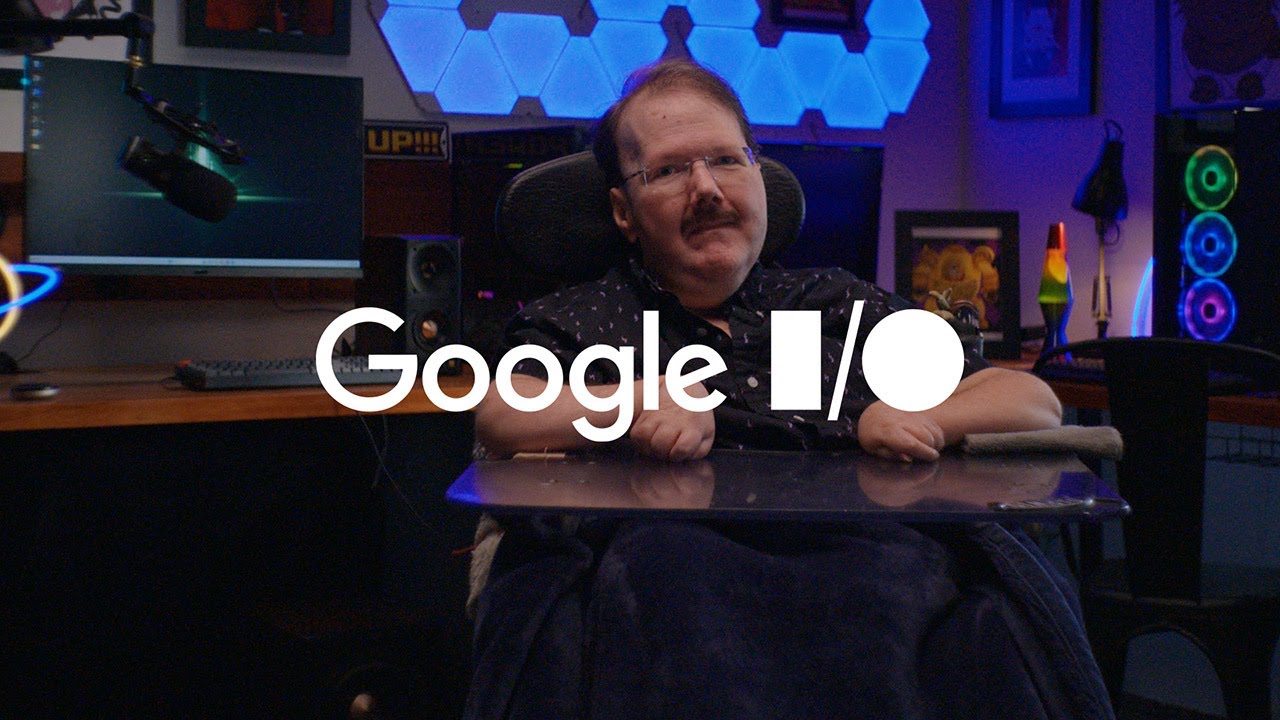In recent years, the world of technology has witnessed a significant surge in innovations aimed at enhancing accessibility for individuals with disabilities. One such groundbreaking technology is Google’s Project Gameface, a pioneering initiative that has revolutionized the way people interact with devices. By harnessing the power of facial gestures and head movements, Project Gameface has opened up new avenues for individuals with mobility impairments to engage with technology.
Google’s Project Gameface is a groundbreaking technology that allows users to control their cursor using facial gestures and head movements, paving the way for a more inclusive and accessible digital landscape.
In this blog post, we will delve into the world of Project Gameface, exploring its features, benefits, and potential applications. We will also examine the impact of this technology on individuals with disabilities and the broader implications for the tech industry as a whole.
II. What is Project Gameface?
Project Gameface is a cutting-edge technology developed by Google that enables users to control their cursor using facial gestures and head movements. This innovative technology uses machine learning and computer vision to track the user’s facial expressions and head movements, allowing them to navigate through digital interfaces with unprecedented ease.
How it Works:
Project Gameface employs a combination of machine learning algorithms and computer vision to track the user’s facial expressions and head movements. The technology uses a camera to capture the user’s facial features and movements, which are then analyzed to determine the intended action. This information is then used to control the cursor, allowing the user to interact with digital interfaces in a more intuitive and accessible way.
Comparison to Existing Accessibility Technologies:
While Project Gameface is a groundbreaking innovation, it is not the first technology to focus on accessibility. Existing technologies such as eye-tracking devices and mouth-operated interfaces have been designed to assist individuals with mobility impairments. However, Project Gameface stands out for its ability to track facial expressions and head movements, offering a more natural and intuitive way to interact with digital interfaces.
Key Features:
- Facial Recognition: Project Gameface uses machine learning algorithms to recognize and track the user’s facial expressions, allowing for precise control over the cursor.
- Head Movement Tracking: The technology also tracks the user’s head movements, enabling them to navigate through digital interfaces with greater ease.
- Intuitive Interface: Project Gameface’s user-friendly interface makes it easy for individuals with mobility impairments to interact with digital interfaces, reducing the need for complex training or setup.
By leveraging machine learning and computer vision, Project Gameface has the potential to revolutionize the way individuals with mobility impairments interact with digital interfaces. In the next section, we will explore the benefits and potential applications of this groundbreaking technology.
III. How Does it Work?
Project Gameface’s facial gesture recognition process is a complex system that involves several steps. Here’s a step-by-step explanation of how it works:
Step 1: Facial Detection
The system uses a camera to detect the user’s face and track their facial features. This is done using machine learning algorithms that can detect the user’s facial features, such as the eyes, nose, and mouth.
Step 2: Facial Expression Recognition
Once the system has detected the user’s face, it uses machine learning algorithms to recognize the user’s facial expressions. This can include emotions such as happiness, sadness, anger, and surprise.
Step 3: Head Movement Tracking
In addition to facial expressions, Project Gameface also tracks the user’s head movements. This can include movements such as tilting the head, nodding, or shaking the head.
Step 4: Cursor Control
The system uses the information gathered from the facial expressions and head movements to control the cursor. This can include moving the cursor up, down, left, or right, as well as clicking and double-clicking.
Examples of Facial Expressions and Head Movements:
- Smiling: Move the cursor up
- Frowning: Move the cursor down
- Nodding: Click the mouse
- Shaking the head: Double-click the mouse
- Tilting the head: Move the cursor left or right
Customization and Personalization:
One of the benefits of Project Gameface is its ability to be customized and personalized to the user’s needs. This can include adjusting the sensitivity of the facial gesture recognition, as well as the speed and accuracy of the cursor control.
Potential Applications:
Project Gameface has the potential to revolutionize the way individuals with mobility impairments interact with digital interfaces. Its innovative facial gesture recognition technology can be applied in a variety of settings, including:
Gaming:
- Competitive Gaming: Project Gameface can be used to control games that require precise cursor control, such as first-person shooters and strategy games. This can be particularly beneficial for gamers with mobility impairments who may struggle to use traditional controllers.
- Accessibility Gaming: Project Gameface can also be used to create accessible gaming experiences for individuals with mobility impairments. This can include games that are specifically designed to be played using facial gestures and head movements.
Productivity:
- Office Software: Project Gameface can be used to control productivity software, such as word processing and spreadsheet programs. This can be particularly beneficial for individuals with mobility impairments who may struggle to use traditional keyboard and mouse interfaces.
- Presentation Software: Project Gameface can also be used to control presentation software, such as PowerPoint and Google Slides. This can be particularly beneficial for individuals with mobility impairments who may struggle to use traditional presentation software.
Education:
- Interactive Whiteboards: Project Gameface can be used to control interactive whiteboards, which can be used in educational settings to enhance learning and engagement.
- Educational Games: Project Gameface can also be used to create educational games that are specifically designed to be played using facial gestures and head movements. This can be particularly beneficial for students with mobility impairments who may struggle to participate in traditional educational activities.
Healthcare:
- Therapy: Project Gameface can be used in therapy settings to help individuals with mobility impairments regain motor skills and cognitive function.
- Patient Engagement: Project Gameface can also be used to engage patients with mobility impairments in their healthcare treatment plans. This can include using facial gestures and head movements to control medical devices and equipment.
Other Applications:
- Art and Design: Project Gameface can be used to create new forms of artistic expression, such as using facial gestures and head movements to control digital art software.
- Music: Project Gameface can also be used to create new forms of musical expression, such as using facial gestures and head movements to control music software.
Overall, Project Gameface has the potential to revolutionize the way individuals with mobility impairments interact with digital interfaces. Its innovative facial gesture recognition technology can be applied in a variety of settings, from gaming and productivity to education and healthcare.
Overall, Project Gameface is a groundbreaking technology that has the potential to improve the lives of individuals with mobility impairments. Its ability to recognize facial expressions and head movements makes it an innovative and accessible way to interact with digital interfaces.
V. Technical Details
The technology requires a high-performance camera with a minimum resolution of 4K and a frame rate of at least 30 frames per second. The camera should also have a wide-angle lens with a minimum focal length of 24mm and a maximum focal length of 70mm.
In terms of processing power, the technology requires a minimum of 8GB of RAM and a quad-core processor with a clock speed of at least 2.5 GHz. The device should also have a dedicated graphics processing unit (GPU) with at least 2GB of video memory.
The technology is open-source, which means that the source code is freely available for modification and distribution. This allows developers to contribute to the project, fix bugs, and add new features. The open-source nature of the technology also enables the community to participate in the development process, providing feedback and suggestions for improvement.
The open-source nature of the technology also allows for customization and modification to suit specific use cases. This can be particularly useful for industries such as healthcare, where specific requirements may need to be met. The community involvement also enables the technology to be continuously improved and updated, ensuring that it remains relevant and effective in the long term.
VI. Future Developments
The technology has significant potential for future developments and improvements. One potential area of focus is the integration of artificial intelligence (AI) and machine learning (ML) algorithms to further enhance the accuracy and efficiency of the technology. This could involve the use of deep learning models to improve object detection and tracking, as well as the development of more sophisticated algorithms for image processing and analysis.
Another potential area of development is the integration of the technology with other Google technologies, such as Google Assistant. This could enable users to control the technology with voice commands, allowing for more seamless and intuitive interaction. Additionally, the integration of Google Assistant could enable the technology to learn and adapt to user behavior, further improving its performance and functionality.
Future developments could also focus on expanding the capabilities of the technology to support new use cases and applications. For example, the technology could be adapted for use in industries such as healthcare, where it could be used to analyze medical images and detect diseases. Alternatively, the technology could be used in the field of environmental monitoring, where it could be used to track and analyze changes in the environment.
The potential for future developments and improvements is vast, and the technology has the potential to become a powerful tool for a wide range of applications. As the technology continues to evolve, it is likely to have a significant impact on various industries and fields, and its potential uses and applications will continue to expand and grow.
Please share your thoughts in the comments. At theproductrecap.com, we are open to friendly suggestions and helpful inputs to keep awareness at peak.






